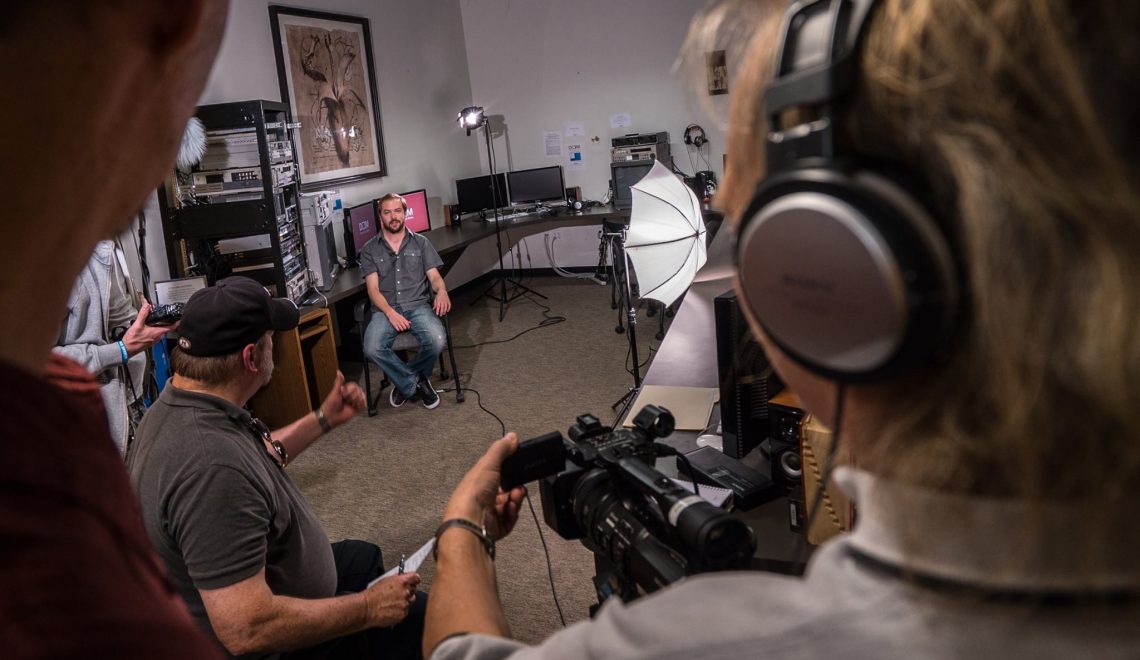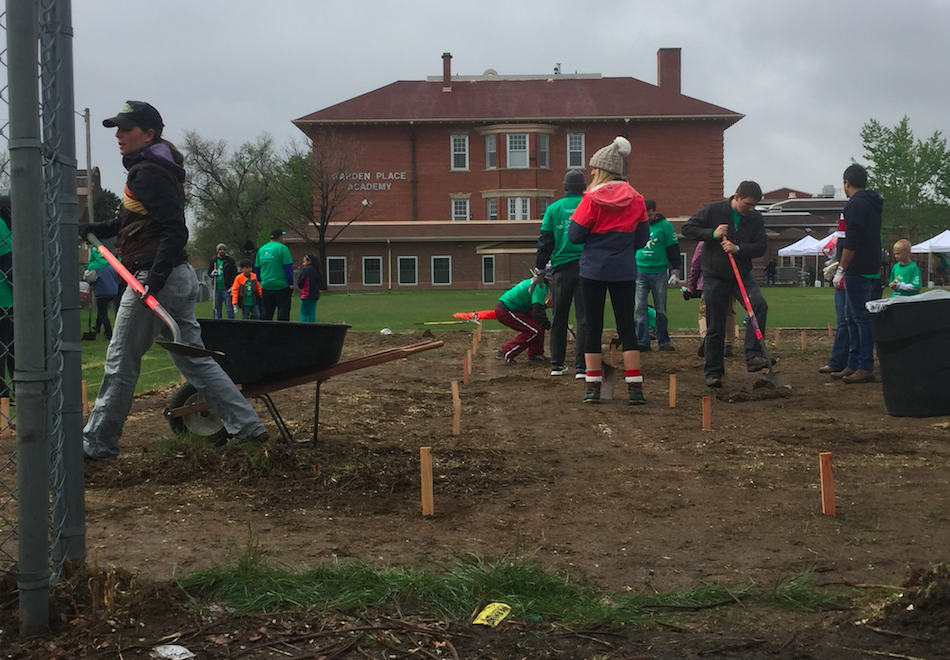
By Veronica Penney
If you aren’t a journalist or producer with a portfolio of published work, it can onerous to know how to share your story with the public. Denver Open Media can help.
DOM, located on the corner of Kalamath and 7th in Denver’s Santa Fe Arts District, is the Open Media Foundation’s largest project. DOM holds Denver’s public-access television license, meaning that all content aired on their radio or television stations is created by community members. Their resources include studios and equipment available for rent, and an online distribution network, similar to YouTube, allows viewers to access videos online.
For those who are looking to make a documentary or podcast and don’t know where to start, DOM offers courses ranging from field and studio production to video editing and graphic design. At $100 or less for most courses, DOM presents a more affordable option than a formal college degree program.
DOM’s Executive Director, Tony Shawcross, was employed at Oracle (the multinational tech organization) before accepting a position with the Colorado State Legislature. His experience illustrated the differences in how organizations, as opposed to individual citizens, can affect lawmaking in both for-profit and government settings.
“In both those environments, monied interests have a significant leg up in shaping public policy,” notes Shawcross. “I started Open Media Foundation as a nonprofit to try and level the playing field and give non-commercial entities and lower income communities, which don’t have as much of a voice in shaping public awareness and shaping public policy, a stronger voice.”
DOM started with a Request for Proposal by the City of Denver. In 2005, Denver had cut off funding to their existing public access television station, which required a large staff to program their community content and schedule the studios. The City was looking for a model that could make public access in Denver work without the use of operating funds that they had formerly provided.
“We had a pretty unique proposal that included software that would really build up the community around the stations themselves,” says Shawcross.
DOM’s model posts all viewer-submitted content online, allows community members to schedule the initial airings of their show and lets viewers vote on the content, thereby deciding what plays on their public access station (and when).
The project keeps overhead low by automating the programming for content instead of relying on staff for scheduling. Videos are awarded time slots according to the number of views that they have received and how highly they are rated by community members.
Aspiring storytellers do need to become members to air their content aired over DOM’s stations, but once you join, all produced shows are guaranteed broadcast. Memberships range from basic access, which allows an individual to submit content, to organizational memberships that include equipment rentals and two transferable memberships.
DOM also offers a $500 Film School, which includes unlimited access to classes for a full year.
If you’ve never produced media before, you’re not alone. According to Shawcross, the vast majority of DOM’s members who submit content do not have previous experience in media, or in producing TV shows or radio shows.
“Given that most people have to take our classes to learn how to do things, the station kind of operates like a stepping stone, for the members that stick with it,” says Shawcross.
For more information on classes, equipment rentals, and member benefits, check out the Denver Open Media website.




